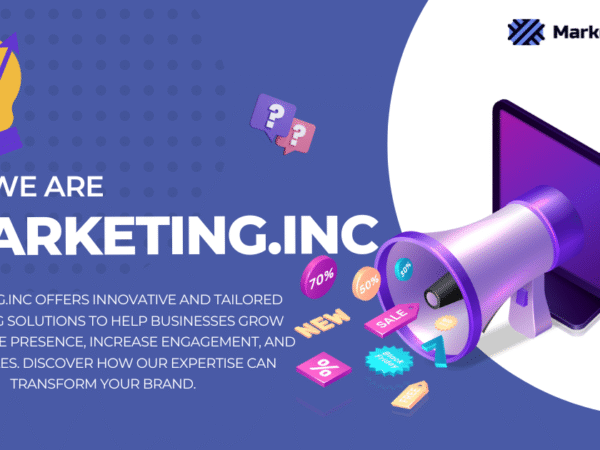In the dynamic realm of product development, the Minimum Viable Product (MVP) has become a guiding principle for start-ups and established businesses. While simplicity is crucial for an MVP, its success hinges on the precision with which it addresses a specific problem. In this article, we will discuss the importance of focusing on solving a specific problem and exploring the key aspects that contribute to a successful MVP launch.
What Are the Main Problems Leading to MVP Failure?
Before building a Minimum Viable Product based on your idea, you need to find the main problems that could lead to the failure of your MVP. After identifying problems with your MVP, you can focus on building solutions around it to increase the chances of success of your minimum viable product. Let’s check the main problems associated with your MVP:
- No Proper Market Research and Validation: Inadequate understanding of the target market can lead to a mismatch between the product and customer needs. Conduct extensive research, segment customers based on demographics, buying habits, and affiliations, and validate the market demand for your product.
- Undefined Target User: Lack of clarity about the characteristics, pain points, and motivations of the target users can result in a product that fails to resonate. Perform quantitative and qualitative research to comprehend the target users’ needs thoroughly, ensuring the MVP addresses specific pain points.
- Lack of User Journeys for Personas: Without mapped user journeys, developers may struggle to understand the steps users take to solve a problem, leading to an unsatisfactory user experience. Create user journeys that visualize the minimum steps needed to provide maximum value, guiding feature prioritization and enhancing the overall user experience.
- Undefined Problem Statement: Without a clear problem statement, the development team may lack a cohesive vision, leading to a product that lacks direction. Clearly define the problem your MVP aims to solve, ensuring that every feature and decision aligns with the core issues you seek to address.
- Improperly Prioritized Features: Striking the right balance in feature scoping and prioritization is crucial; too few features may not meet user needs, while too many can lead to scope creep. Regularly reassess and re-prioritize features based on evolving user feedback and market dynamics to maintain an optimal feature set.
Why is Solving Specific Problems Essential for MVP Success?
When creating a product, it’s best to focus on solving one specific problem with your MVP. This way, your product can provide a targeted solution for well-defined user needs. This approach lets you concentrate your resources and efforts on addressing a single pain point, so you can create a more focused and effective solution.
Instead of trying to solve multiple problems with a generic product, targeting a specific problem will make your MVP more relevant and useful to your target audience. In this era of rapid technological advancements and heightened user expectations, focusing on solving a specific problem becomes even more crucial.
Precision in Resource Utilization
Developing a product, whether for start-ups or established businesses, involves significant resource allocation in terms of time and money. Focusing your MVP on solving a specific problem ensures efficient resource utilization. By concentrating on essential features that directly address identified problems, you avoid unnecessary complexities, streamlining your development process.
User-Centric Design for Enhanced User Experience
Solving a specific problem ensures a user-centric design approach. Rather than creating a product with numerous features that may or may not be useful, an MVP centered on a particular problem allows you to prioritize features that directly alleviate that specific pain point. This approach enhances the user experience and increases the likelihood of user adoption.
Rapid Iteration and Feedback
One of the primary goals of an MVP is to gather feedback quickly and iterate accordingly. When your MVP addresses a specific problem, it becomes easier to assess its impact on users. Rapid iteration becomes more manageable as you can hone in on the particular aspects of the solution that need improvement based on user feedback, accelerating the overall development process.
Market Validation through Problem Resolution
Solving a specific problem enhances the chances of achieving market validation. If your MVP effectively addresses a pain point, it’s more likely to attract early adopters who are actively seeking a solution to that particular issue. This initial validation provides a solid foundation for further development and expansion.
Building a Strong Value Proposition
A focused MVP contributes to a compelling value proposition. By offering a solution to a specific problem, you communicate a clear and valuable benefit to your target audience. This not only attracts users but also sets the stage for differentiation in a crowded market.
User-centric Approach for Meaningful Engagement
A problem-solving MVP puts the user at the center of your development process. By understanding the specific problem you aim to solve, you gain valuable insights into your target audience’s pain points, needs, and behaviors. This user-centric approach allows you to tailor your MVP to address their specific requirements, ultimately increasing the chances of user adoption and engagement.
Competitive Advantage in Specialization
In today’s highly competitive market, differentiation is key to standing out. Focusing on solving a specific problem sets your MVP apart from generic solutions and establishes a unique selling proposition. By becoming known as the go-to solution for a particular problem, you gain a competitive advantage over broader, less specialized products.
Faster Iteration and Validation with Manageable Scope
When you aim to solve a specific problem, the scope of your MVP becomes more manageable. A narrower focus allows you to develop and release your product more quickly, avoiding the complexities that come with trying to tackle multiple issues at once. By accelerating your iteration cycles, you can gather valuable user feedback faster, validate your assumptions, and make necessary adjustments promptly.
Early Traction and User Engagement
Focusing on solving a specific problem increases the likelihood of early traction and user engagement. By addressing a distinct pain point, you attract early adopters who are actively seeking a solution. These users are more likely to be motivated to provide feedback, share their experiences, and advocate for your product within their networks.
Scalability and Expansion in a Strategic Manner
A problem-focused MVP provides a solid foundation for scalability and expansion. By mastering a specific problem domain, you can establish a strong foothold and gradually expand your product offering. This incremental approach allows you to expand your market reach while maintaining a clear value proposition and focused user experience.
Conclusion:
Focusing on solving specific problems related to your Minimum Viable Product is a strategic approach that gives numerous benefits. From efficient resource utilization and enhanced user experience to market validation and competitive advantage, a problem-centric approach lays the foundation for long-term success. By navigating these challenges effectively, you can enhance the chances of creating a successful and impactful minimum-viable product. With our proven experience in deriving the best solutions for your MVP, DSHG Sonic is focused on transforming your ideas into successful ventures. Connect with our experts today and make your start-up journey easier.








